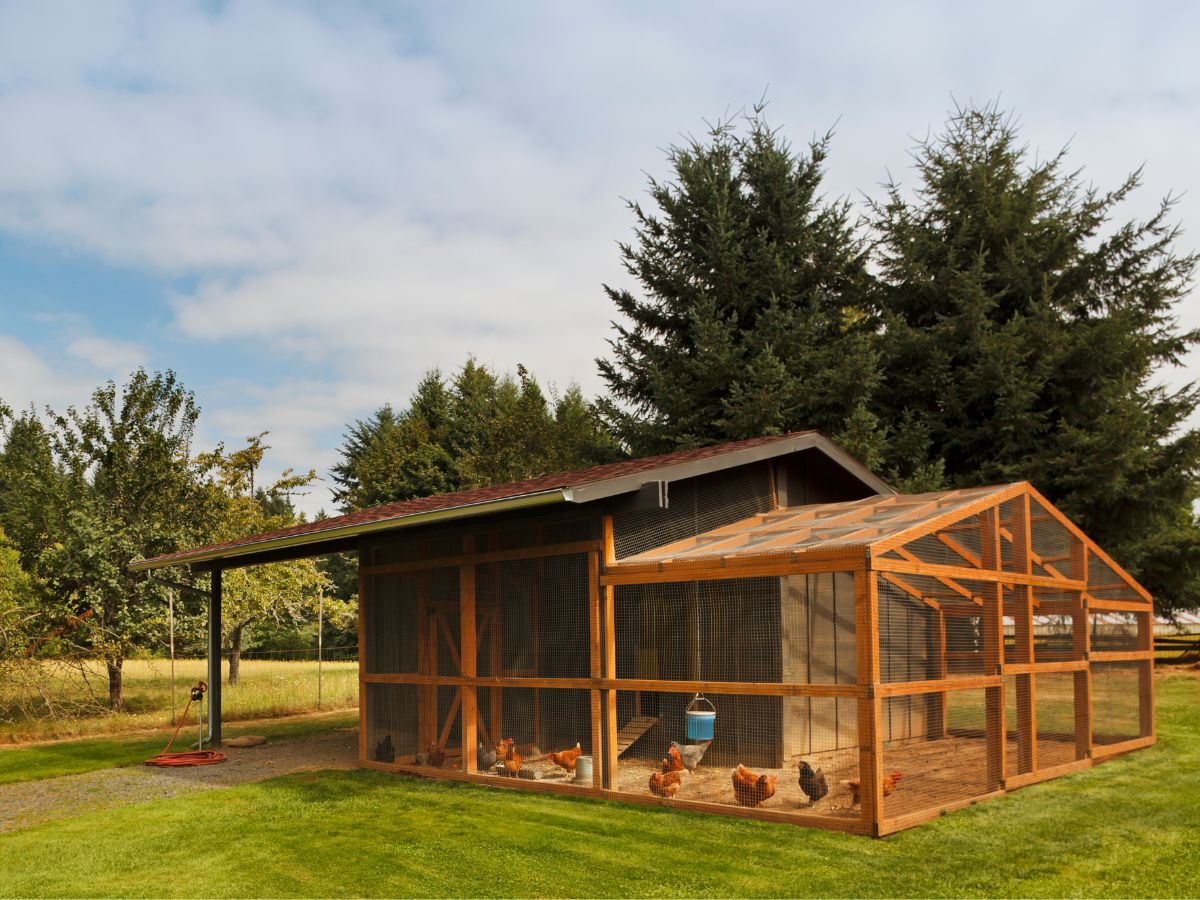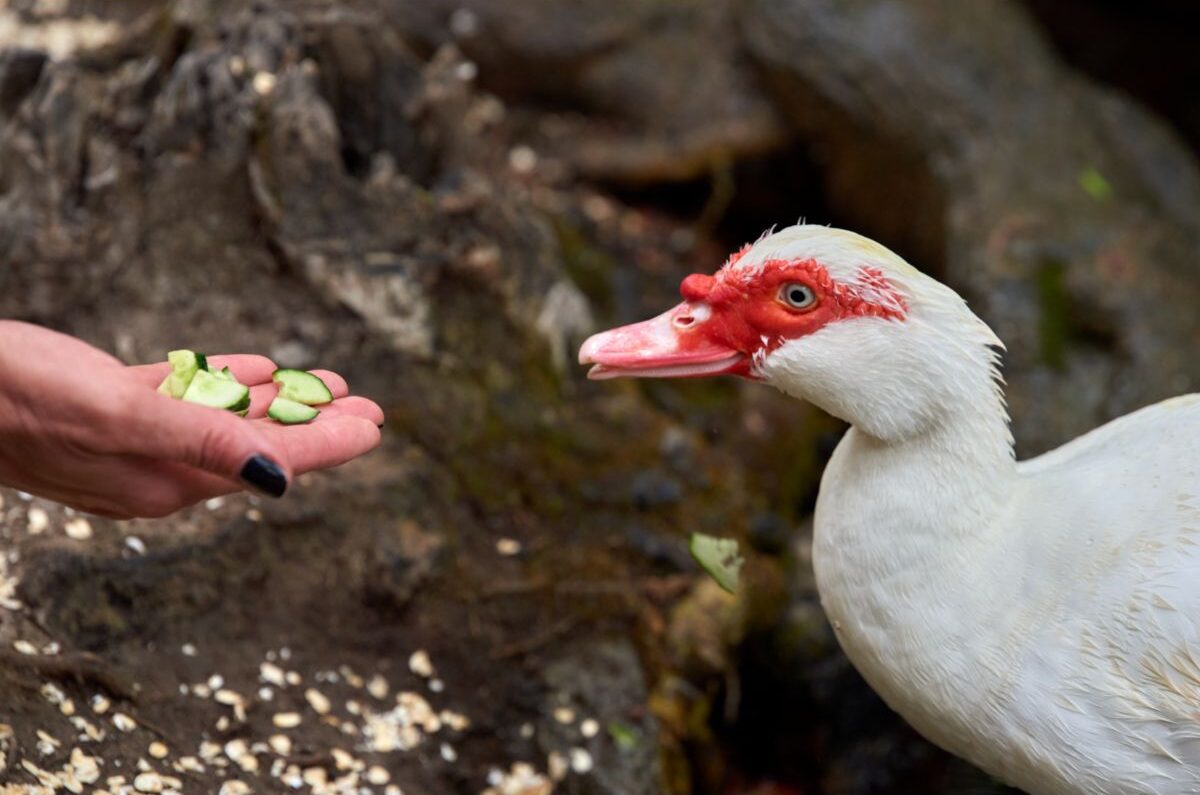Every chick deserves a section of prime real estate in your backyard, and just like the Kardashian penthouse, you can expect a lot of shenanigans and drama to play out in the Henhouse. So make sure you give them a pad worthy of the drama queens they are.
As far as chicken coops go, you can opt for a basic structure or upgrade to the fancier digs with all the trims. Either way, the primary purpose of a chicken coop is to provide shelter from the weather and a safe place that is out of reach from predators such as foxes, raccoons, and birds of prey.
How To Set Up A Chicken Coop:
- Gather Materials Needed To Set Up Your Chicken Coop
- Determine The Size Of Your Chicken Coop
- Draw A Plan For Your Chicken Coop
- Build A Foundation For Your Chicken Coop
- Installing A Floor For The Chicken Coop
- Build A Solid Frame For Your Chicken Coop
- And More …
Contents
1. Gather Materials Needed To Set Up Your Chicken Coop
When budgeting for your chicken coop project, you must decide beforehand which materials you prefer. Here is a list of materials that you can gather together before you start your chicken coop project:
Wood
Remember that most of your chicken coop will be built from wood, requiring maintenance from rot and infestation. Your chickens’ environment can make a big difference to their health, and you may be wary of too many toxic treatments to your wood.
Use pressure-treated lumber for the legs of your chicken coop. Treated woods may contain toxic substances which your hens may ingest; however, they are excellent at preventing rot and insect infestations. Choosing untreated wood may mean more maintenance and having to replace panels regularly.
Alternatively, you can treat the wood yourself with environmentally friendly treatments or choose wood resistant to rot and insect infestations. Your choices will affect your overall cost, so plan accordingly.
Latches
Choose latches that raccoons won’t be able to open. Raccoons have very nimble hands and are clever enough to figure out how to open most latches. Opt for padlocks or spring-loaded eye hooks.
Wire Mesh
Using chicken mesh in your chicken coop construction can help with ventilation while keeping the coop secure from outside predators.
Floors For Chicken Coop
When choosing material for the floor of your chicken coop, opt for wood that won’t rot quickly. This means choosing treated wood or naturally rot-resistant wood. Another option would be to use plywood and then cover it with linoleum.
Remember that your chicken coop floor will get the brunt of all the mess your hens make. Linoleum is cheap enough to replace when it wears out but is easier to clean and disinfect.
The floor of your chicken coop will need to be cleaned often to avoid diseases and infection, so decide which material will be best to cover the floor with ahead of time. Wood shavings are a good, cheap option. These need to be replaced roughly once a week.
Waterers And Feeders
There is a range of feeders that you can buy to simply install in your chicken coop. Make sure you know the size and proportion that will fit best with your chicken coop design.
Feeders allow you to know how much feed is needed at any point in time. Many poultrymen simply sprinkle chicken feed on the ground for the hens to peck up. The problem is that lots of feed can go to waste this way. In the chicken coop, these leftover bits of food can eventually attract pests.
Your chickens need an adequate supply of clean water to stay healthy. As with the chicken feeder, you can opt to spend some extra cash on a fancy store-bought waterer, but installing a simple homemade waterer is entirely possible.
2. Determine The Size Of Your Chicken Coop
No one enjoys being cramped together or sharing a sleeping spot with family members. Your flock will be in Henhouse Real Estate Heaven if you provide enough space for each flock member.
Don’t embarrass your hens by making them share brooding boxes, as each deserves the luxury of privacy. Not only will this cause stress levels to rise, but a lack of adequate space will mean that chickens in the lower pecking order will get picked on more often, and they will have nowhere to find respite.
A lack of space in the henhouse will also cause a maintenance issue, as you will need to clean up more often as a considerable amount of manure will build up over a shorter period. With bad hygiene comes diseases and general bad health.
Each chicken will require at least three to four square feet of space in the chicken coop, depending on the breed. Provide another four square feet of space per chicken for when they are outside of the coop.
If your backyard doesn’t allow enough space to provide for each chicken inside and outside the coop, opt for building a chicken coop with enough run without leaving the coop (around eight to ten square feet per chicken).
The space you lay out per chicken should exclude the space you need for nesting boxes, feeders, waterers, and roosting bars. Don’t forget to allow space for proper air vents for ventilation.
The height of your chicken coop will depend on the size of the doors you wish to install. Ensure that the door height is comfortable for whoever will be the designated egg collector for the family.
3. Draw A Plan For Your Chicken Coop
Once you have a good idea of the location and proportions of your chicken coop, including the height, shape, and floor plan for where your feeders, waterers, nesting boxes, and roosting spots will go, you can put a proper plan down on paper.
Plot out the floor plan, height, and dimensions for the walls. You can also find free chicken coop plans online.

4. Build A Foundation For Your Chicken Coop
Setting up a good base for your chicken coop is vitally important, and the best advice here is to elevate the base of your chicken coop to protect against predators. Predators like snakes and rats will use the floor to access your coop.
Raising your chicken coop about eight to twelve inches above the ground will provide enough protection from these threats while still being easy for your chickens to access comfortably.
Installing an elevated floor will mean that the floor of your chicken coop is not directly touching the ground. This means you protect your floor from cold and moisture from the ground, which means a more comfortable temperature for your hens.
Preventing moisture from seeping into the chicken coop floor means the chances of rot are greatly diminished. You can also expect to have a lot less maintenance over time. Plot out the dimensions of the chicken coop and lay a foundation of concrete on which to support the legs.
Ensure that the ground is level to prevent your chicken coop from tilting and throwing out the measurements for your frame. Next, construct the legs that will hold up the floor of the chicken coop. The legs should measure a maximum of twelve inches. Only use treated wood for the legs to avoid rotting.
5. Installing A Floor For The Chicken Coop
The base of your chicken coop should be made from a solid piece of wood that can fit on top of the legs of the chicken coop. Ensure that the chicken coop floor is level and sturdy. Hammer nails into the floor to securely attach it to the chicken coop legs.
6. Build A Solid Frame For Your Chicken Coop
You must take your time constructing a sturdy frame for your chicken coop. The frame is the backbone of your henhouse. Keep the shape simple, such as a square or rectangle.
Ask your local hardware store to supply you with the correct lengths of wood, which can save time for cutting your wood or getting incorrect measurements. Opt for the best you can afford for the frame. Poor-quality wood is not an option if you want your chicken coop to last.
Treat the wood for rot and insect infestations to avoid problems later. The frame of the chicken coop needs to be able to hold up the weight of the chicken coop and support door frames and walls. An unstable frame can easily cause the entire structure to collapse.
7. Set Up The Walls To The Chicken Coop
Measure the correct dimensions for your walls that will fit inside the frame. Simple plywood should be suitable for the walls. Use staples or nails to secure the wall panels into the frame. The wall panels should be easy to replace should they need maintenance.
8. Set Up Nesting Boxes In The Chicken Coop
Fortunately, furnishing your Chicken Coop Pad is reasonably simple, and the nesting boxes are super simple to construct. A basic box made from plywood and filled with soft fillings is sufficient. I would recommend that you repurpose any wooden box, such as a crate for your nesting boxes, to save yourself time.
Calculate the number of nesting boxes needed by allocating one for every four to five hens. Hens become broody if there are enough available nesting boxes for each one, and they may be tempted to try to hatch their eggs.
9. Set Up Roosting Perches In The Chicken Coop
Ideally, each chicken will need approximately six to 10 inches of roosting space—the roosting perches must be a minimum of two feet off the ground. Use your creativity to create interesting perches for your flock.
A repurposed ladder, tree branches attached to the walls at an angle, or neat rods spanning from one wall to the next are all options. Ensure that the roosts are securely attached to prevent any unfortunate accidents.

10. Install Waterer And Feeder In The Chicken Coop
Once you have decided which waterer and feeder to use, place it in a section of the chicken coop where your flock spends the most time. Place the water and food outside the chicken coop in a sheltered area inside the chicken run.
Placing the water and food outside the chicken coop will give you easy access when replenishing it.
11. Install a Latched Door To Your Chicken Coop
The kitchen coop door can be cut out of a piece of plywood. Determine beforehand what the most comfortable height for the door would be. Remember, you must access your chicken coop to clean, collect eggs, and do maintenance.
Measure the door’s inside to determine the door’s length and breadth. Attach simple hinges, which you can get from the hardware store, to hang the door on its frame. Fit the latches to your door so that it will lock securely.
12. Add Ventilation To Your Chicken Coop
Drill holes near the ceiling of your chicken coop using a hole saw. Use the wire mesh to cover these ventilation holes, which could give predators access to your fowls.
13. Decorate and Accessorise Your Chicken Coop
And now for the fun part! You can use non-toxic paints and wood finishers to give your chicken coop a polished look. Adding quirky details such as a henhouse number or a decorative handle on the door can give it a charming touch.
How To Make A Feeder To Put In A Chicken Coop
To avoid spending money on a fancy store-bought feeder, you can easily make a Do-It-Yourself feeder. These can work just as well as the store-bought variety and will ensure that your chickens are well stocked up on food.
Choosing A Location For The Chicken Coop
As with real estate, the most crucial consideration for your chicken coop is location, location, location!
You must ensure that your chicken coop receives adequate sun and as little dampness and moisture as possible. Exposure to the sun helps improve the egg-laying capacity of hens, so ensure that your chicken will receive sun for a good portion of the day.
Regulating the amount of shade and sun your chickens will ensure that they always have a comfortable place to warm up but, at the same time, can be guarded against very high temperatures in Summer.
I recommend that you build your chicken coop with a southern exposure, but ensure that there will be some shade available during the day. Shade can come from a nearby tree or the side of your house.
Pick an elevated section of your backyard to avoid flooding. Steer clear from sections of your yard that are often muddy and damp. Your backyard will probably not be completely flat, so avoid building your coop in any section that has dipped as water will be sure to collect in the ground and cause problems with dampness.
Be aware that chickens will always be in a predator’s crosshairs. Avoid building your chicken coop close to thick bushes and shrubs. These provide cover for predators to hide as they dig into your coop. Construct the henhouse in an area with plenty of traffic, close to the main house, where it’s easy for you to monitor any threats to your fowls.
Once you have a good idea of the location and proportions of your chicken coop, you can put a proper plan down on paper. Plot out the floor plan, height, and dimensions for the walls. You can also find free chicken coop plans online.
Building A Proper Base For Your Chicken Coop
If you are willing to invest slightly more money, laying down a concrete base for your chicken coop is a great way to keep out moisture and prevents predators from accessing your chickens via the ground.
Conclusion
Plan your henhouse with care for the number of chickens you wish to house, and ensure that you factor in regular maintenance and a good cleaning routine. Choose an appropriate setting in your backyard, away from possible predators and with enough sunlight and minimal dampness.
Construct an elevated base for your chicken coop and build a sturdy frame. Secure the plywood walls and a door, and install the ventilation close to the ceiling. Install roosting perches and nesting boxes inside the chicken coop, and place the waterer and feeder outside the coop for easy access.




